High Bank Waterfront
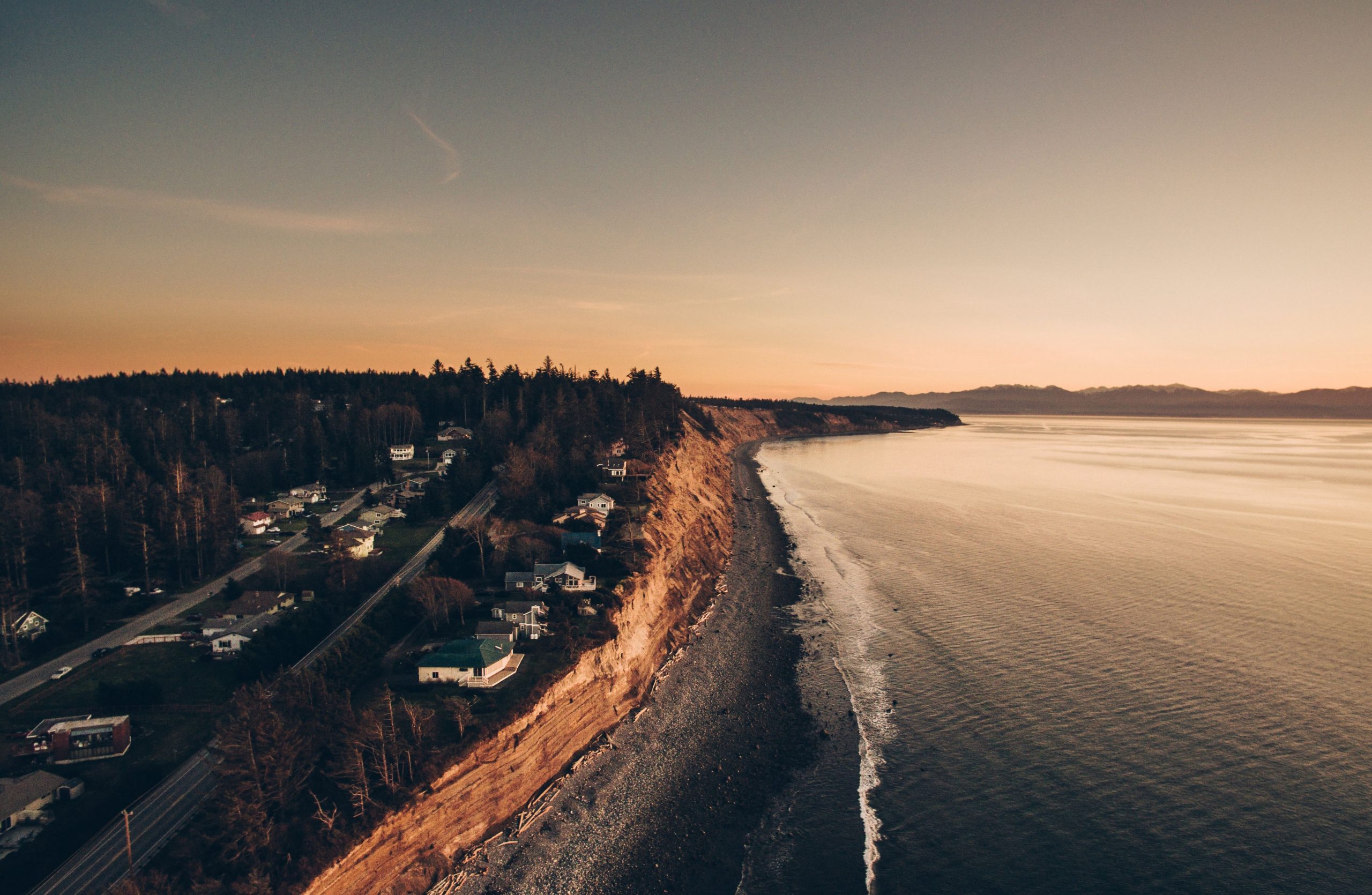
Whidbey Island has an interesting geological history. During the last glacial age (around 15,000 years ago) Whidbey was so weighed down with ice that it was submerged far underwater. High bluff areas like the ones on West Beach, pictured on the front, are well above the waterline now but the wind, waves and slowly eroding bluffs keep geology enthusiasts coming back for interesting finds. These have included mammoth bones (no kidding!), huge erratic boulders dumped by glaciers, bands of black peat, and even shell middens left by the Coast Salish. Insane right? Tell us what you have found walking along the high-bank waterfronts of Whidbey.
This stunning photo is brought to you by: Willie Shaw
What View is Best on Whidbey Island?
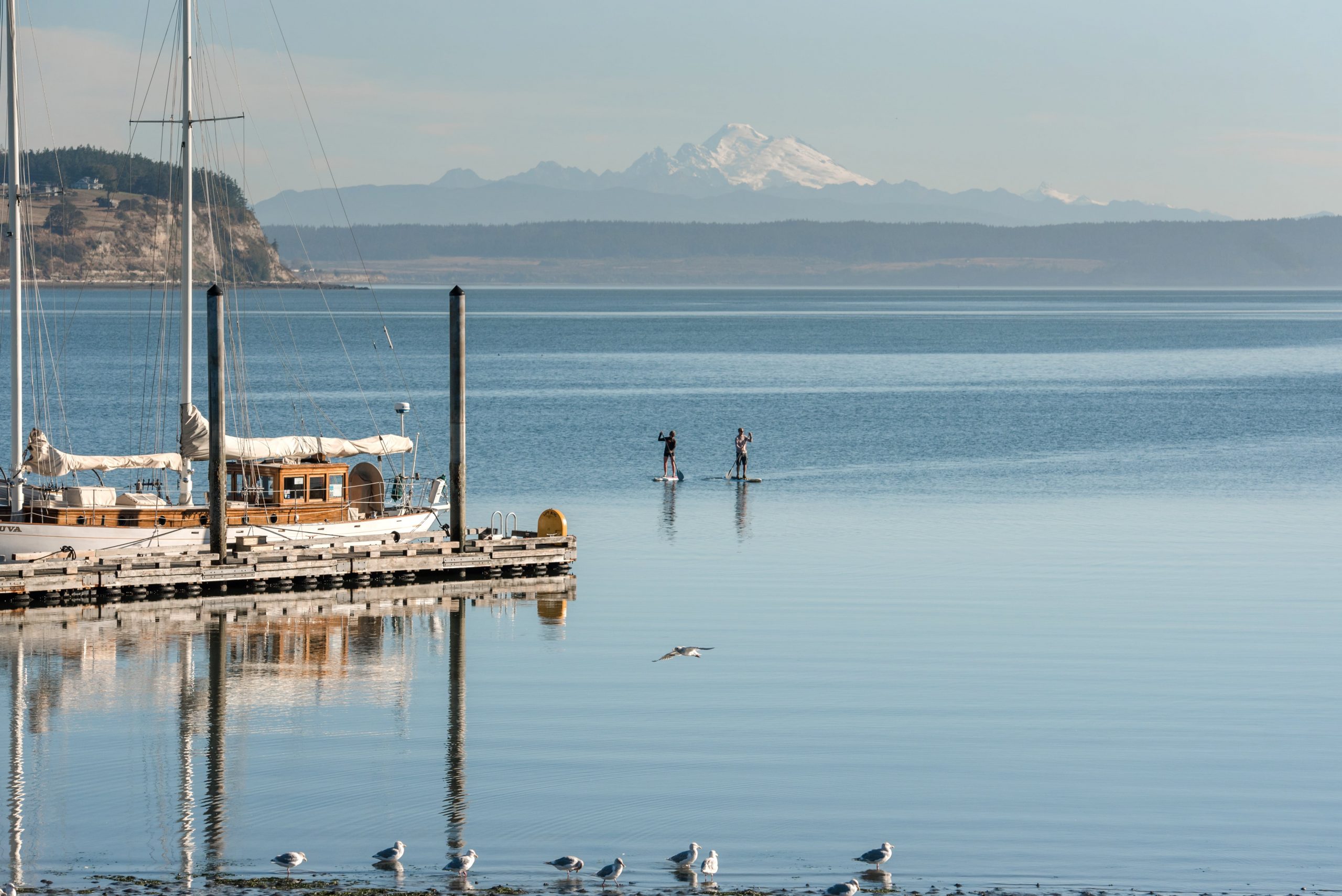
Whidbey Island straddles the 47 to 48th parallel. This means the summer brings gluttony of sun, so much that black-out shades are a staple in Pacific Northwest homes. Although, this abundance of light is sometimes hard to remember during the darkest days of winter when the sun only passes by at a shallow 45 degrees above the horizon in the South and keeps us in darkness 15.5 hours out of 24 on our darkest winter day. These extremes are affected even more depending on where we live, what direction our property is “facing”, and how much tree coverage we have. We consider the direction property is facing as the direction of the major view or placement the outdoor area is oriented towards. So if you enter a home on its east side but the outdoor area is on the west side with a deck/patio and view we would call this a west-facing home.
In the following sections, we will discuss the pros and cons of the four major directions that homes face or are oriented towards on Whidbey. Our focus will be on water view properties but the info will work for some territorial or non-view homes as well. We hope you find this helpful and that you will take this into consideration when buying or selling your home on Whidbey Island.
North Facing

This is likely the least sought-after direction for the sole reason that during the winter months there are often large sections of the North facing beaches that never see a ray of sun because of hill or tree coverage. There are only a few sections of shoreline that are facing the true North on Whidbey. Some of these are the charming Town of Coupeville and the City of Langley that no one can resist! There are some sections of shoreline east and west of Coupeville along Madrona Way and near Long Point that are mostly shaded in the winter but absolutely delightful in the summer.
There are numerous sand points on Whidbey with a north-facing side that get a lot of sun because they jut out in the water like Long Point, Snakelum Point, Harrington Lagoon, Whidbey Shores, and Sandy Point. Dugualla Heights is another kind of anomaly in that it gets more sun because it is not heavily treed, has an open bay, and flight line that gives it more exposure. These nuances are one of the many reasons it is helpful to have a hyper-local full-time Windermere broker to be your guide!
East Facing

Enjoy stunning views like these of boats in the cove when you live on Whidbey Island.
If you are a morning person and just relish a warm cup with a view of the sun rising over the mountains, water, or horizon then an East facing orientation is for you! You are in luck because Whidbey Island has a majority of East-facing shoreline and the hilly nature of the island offers a plethora of view opportunities for the Eastside. Many of such views include the Cascade Range and Mt. Baker to admire. They can really put on a show when it is clear. The only downside is that you lose the sun in the mid to late afternoon on Eastern shorelines.
The major benefit of living on the Eastside is that it is the more protected side of the island so there is not as much wind and wave action. Occasionally, an unusual day will occur when there is a wind howling out of the South where the fetch created across the long body of water in Saratoga Passage can really kick up some waves! But this can also make for some amazing photo opportunities.
Some of our favorite East facing areas/neighborhoods are Davis Landing, Scenic Heights, and Shangri-La Shores. Check them out here!
South Facing

Enjoy the sun on Whidbey Island.
South-facing properties are a pretty rare find on Whidbey Island because of Whidbey Islands’ long north/south orientation. If you are a person that lives for the sun you will want to seek out one of these South-facing properties. Unlike the North facing properties who often get no sun during the Winter, these South facing properties get every bit of light possible all year long even during the winter pouring into their South facing windows. In fact, because of the low angle of the sun in the winter, it can be more piercing than in the summer when it is placed directly overhead.
South-facing beaches tend to be the most sought after for wading, swimming, or just lounging on the shore because they are typically a lot warmer.
Penn Cove Road and Polnell shores not only enjoy South facing beaches but are also on the more protected East side of the Island. One of the warmest sandy public beaches can be found right at the end of Monroe Landing on the Northside of Penn Cove. If you are looking for the best sandy public beach that is South facing on the bottom half of the Island Double Bluff beach just cannot be beat AND you can bring your four-legged friend for an off-leash romp! Read more about it here.
Sunlight Beach and Shore Avenue in Freeland have some of the highest-priced homes on Whidbey because of these unique attributes. Except for the rocky beach and jet noise Keystone has exactly the same view aspect but for half the price.
West Facing

If stunning sunsets and enjoying the warmest part of the day on your property is what you are after then you should be looking for a West-facing view. Sipping an evening cocktail or cup of chamomile tea while watching the last rays of light dip over the horizon is just bliss for a lot of people which is why the West side of Whidbey has some of the highest-priced homes and sought after neighborhoods. Yes, the wind can be a little more fierce as it hits the West side of Whidbey dead on when it howls through the Strait of Juan De Fuca in the winter but this can also be a highlight as you watch a winter storm take shape from the comfort of your couch. If you are on the edge of one of our high sandy bluffs on the West side of the Island you should also expect to deal with blown sand, saltwater, and the corrosion that comes with it. Some West-facing homes operate more like a ship at sea than a stick-built home. The sunsets though… Definitely worth it if that’s your jam!
Some of our favorite West facing neighborhoods are Sierra and Ledgewood communities because the sloping topography allows a lot of homes to have stunning views without having to own waterfront property. The canal community of Lagoon Point is a unique West-facing community and of course, anything along West Beach Road is likely to have this coveted orientation.
Bird Watching on Whidbey Island
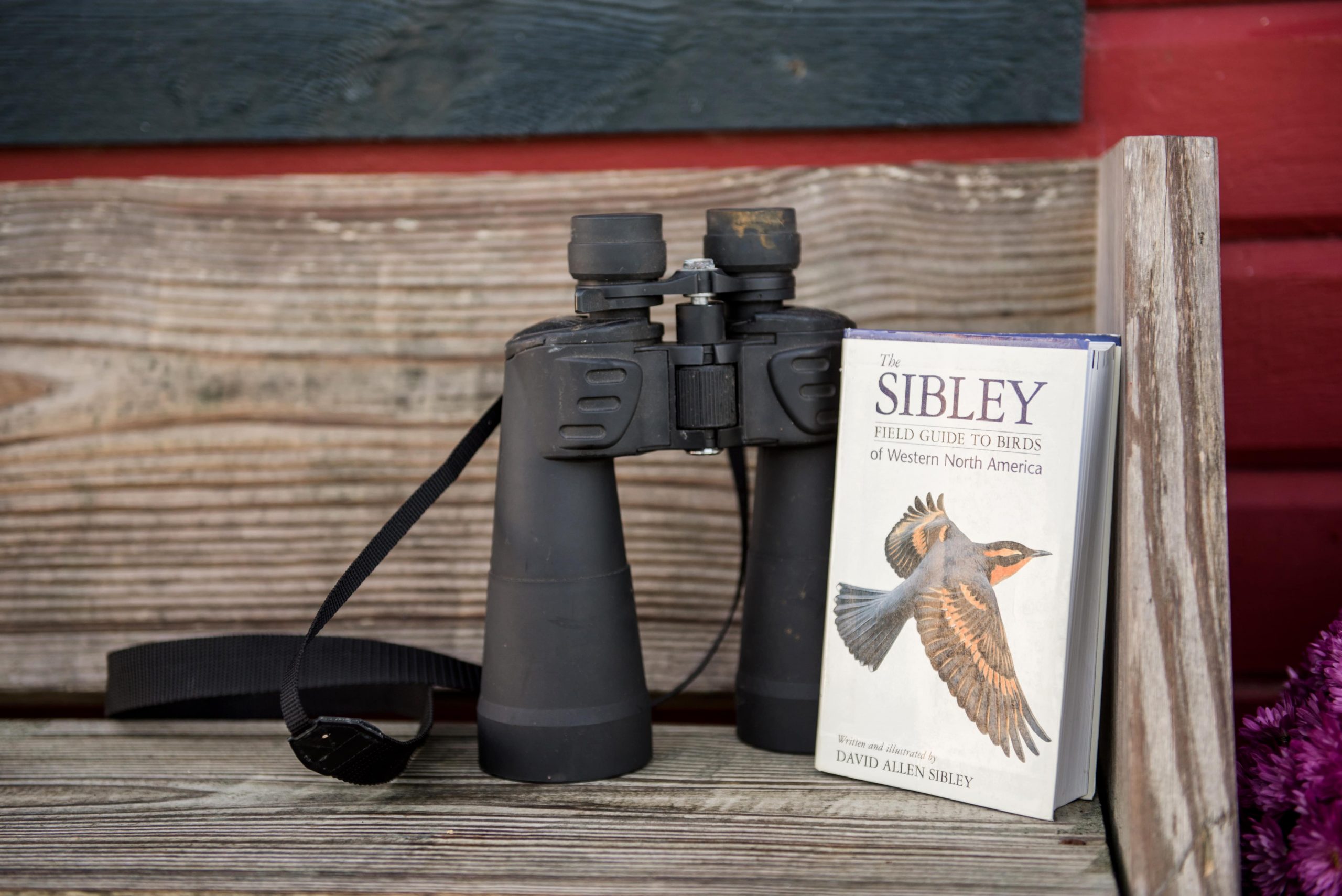

50 miles South of the U.S./Canada border and 25 miles North of Seattle lies Whidbey Island, an incomparable destination for nature lovers and bird enthusiasts. On Whidbey, you can get lost for hours and find yourself mesmerized not only by incredible views but by a breathtaking variety of birds.
Whidbey Boasts 148 miles of winding shoreline, 6 state parks, 4 lakes, hundreds of miles of trail, and a ridiculous variety of habitats from bogs to estuaries to the prairie. It is not surprising then that Whidbey accommodates roughly 250 resident and migrant bird species.

Birdwatchers will declare some of the best times to watch for birds on Whidbey are:
Spring:
Late April through May you can expect to be woken early by the Songbirds singing a pleasant tune.

Fall:
Late July through September It is hard not to miss fat red-breasted Robins filling the apple trees and spot migrant visitors from the north like wigeons, ducks, coots, waterfowl, and red-tailed hawks.

Winter:
November through mid-March is a great time of year to watch for Northern Shrike, Bald Eagles, and other raptor-type birds.

Best places for birdwatching:
If you are just trying to take advantage of easily accessible shoreline almost any time of year works. Some of the best places to watch for shorebirds birds on Whidbey Island are Penn Cove, Keystone Landing, Fort Casey State Park, and Dugualla Bay.
If you don’t live on Whidbey and are coming just for birdwatching be sure to schedule more than one day for viewing. Plan time so you can experience multiple locations, each with its unique features. To better understand all the places you can access the shoreline you really need to buy Getting to the Waters Edge! We sell it at our Windermere offices both in Oak Harbor and Coupeville.
Frequently asked questions:
Some people wonder if there is a time of day that birds are most animated. Typically speaking most birds are bustling around sunrise and sunset but that rule does not apply to all birds. For example, the morning is typically the best time for spotting diurnal species, while nocturnal species are generally spotted in the evening, but it really depends on the bird and the time of year.
Whidbey Island is native to species like Eagles, Northern Harriers, wading birds, loons, grebes, sea ducks, including Harlequin Ducks, dabbling ducks, Black Oystercatchers, Common Yellowthroats, Marsh Wrens, and more. It is also is a temporary home for migrant birds who frequent the island seasonally for the island’s ideal breeding habitats. But do not be fooled. Some birds like robins, hawks, cardinals, finches, sparrows, and more stay here all year but they seem to “return” because they become active again during the spring through fall seasons after they have bundled down in their nests and shelters during the winter.
Additional resources:
To learn more about the birds that can be spotted on Whidbey and a guide for when you will likely catch a glimpse check out this detailed Whidbey Island Bird List created by the Whidbey Audubon Society.
Here are some of our favorite spots on Whidbey to watch for birds let us know your favorite spots in the comments below.
The Gray Whales Return to Whidbey
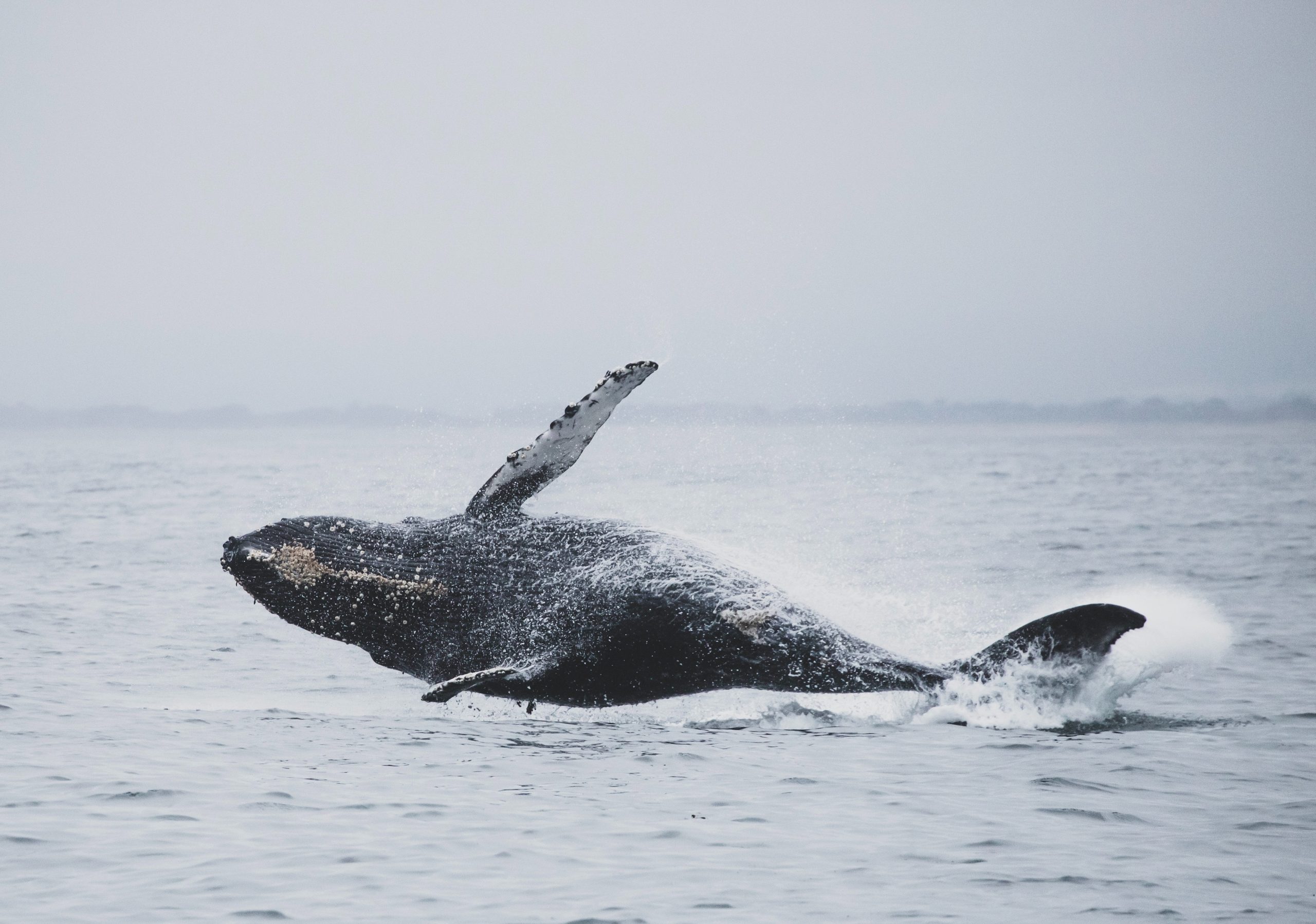
Gray Whales Return to Whidbey
As the cold melts away and flowers start to bloom again, Whidbey Island is blessed with a rare and wonderful gift. Many people hike to the very tip of a bluff or edge of the waves hoping to catch a glimpse of this phenomenon. Then it happens – water spurts into the air from nowhere and at the surface, you can just barely see a tail appear.
Oh, what a whale of a tale to tell….
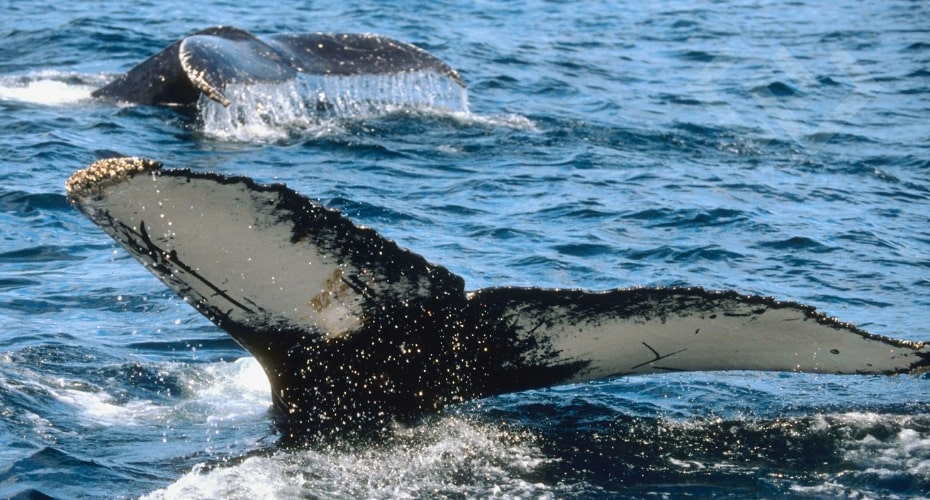
Spring brings with it a special excitement for this curious island. As the waters warm, they welcome back one of our favorite travelers; the gray whale! Migrating every year from their winter home in Mexico to the wild waves of Alaska; gray whales often make a special stop within the waters of the Puget Sound.
As food foragers, the gray whale “dig[s] up the mudflats [on the ocean floor] for shrimp and worms.”1 They then filter these small creatures through their baleen, or whalebone, which acts as a strainer to keep the food in their mouth and push out all the water.2
Given their foraging requirements, gray whales’ proximity to the shore and repetitive presence in the Puget Sound comes as little surprise. While the average depth of the Pacific Ocean is a little over 12,000 feet, Puget Sound’s deepest point is approximately 930 feet. The shallow waters of the sound serve as a great benefit to this massive mammal that relies on both oxygen and access to the ocean floor in order to survive.
On Whidbey Island, we take great joy in the return of these travelers every year. Many islanders and tourists alike find their way to the water’s edge and peer into the waves in hopes of a glimpse. Luckily, sightings are not at all uncommon on the island. To commemorate the love we have for these ocean friends, both Coupeville and Langley have erected what is called a “Whale Bell.” These bells have a simple instruction: “See a whale, ring the bell.” These bells serve as both a monument to the whale’s impact on our island culture and a creative way to notify others of the whale’s presence so they can also look out and see!
View this post on Instagram
Every year the town of Langley has pulled together to commemorate the beginning of whale season. Complete with a parade, this festival speaks volumes of the love islanders have for their precious whales. Unfortunately, the event has been canceled this year due to covid for the health and safety of the community continue to check back here for updates. While the ring of the bell brings joyous memories of years past residences and travelers alike look forward to a day where gatherings return to celebrate these incredible creatures.
References
- “Gray Whales.” Orca Network, https://www.orcanetwork.org/Main/index.php?categories_file=Gray%20Whales
- “Gray Whales.” National Geographic, https://www.nationalgeographic.com/animals/mammals/g/gray-whale/
You might also like:
Get the Buck Out of My Yard
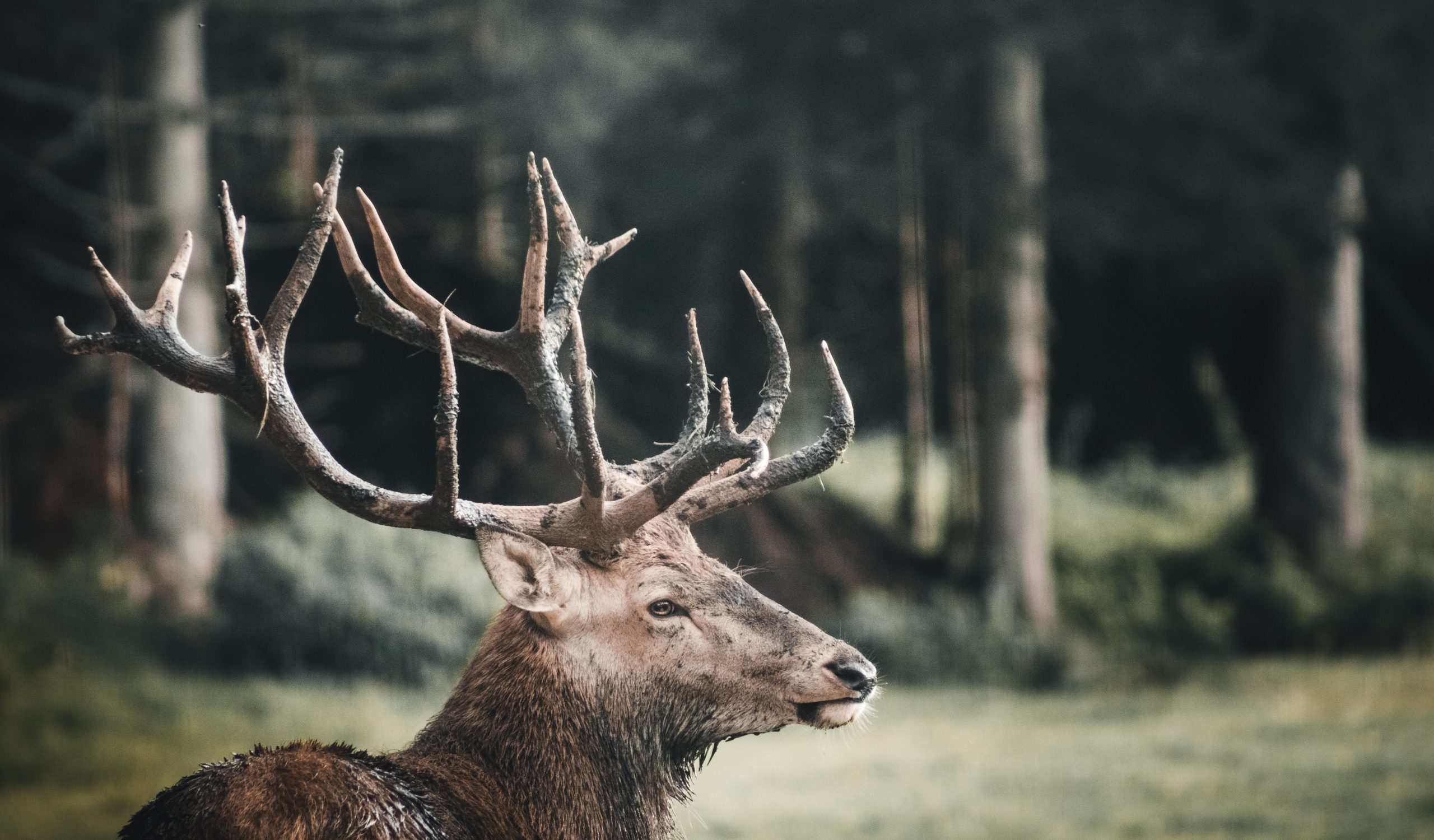
Have you ever been standing there admiring your gardens when a deer walks in and decides it is time for lunch? So have we.

They are the wild and majestic creatures of Whidbey Island, often found in the peaceful pastures of Ebey’s Landing or beneath the cooling tree shade of the state parks. They are elegant, graceful, mesmerizing… and frankly a pain in the arbor.
Oh deer, oh deer, oh deer.

Don’t get us wrong, we LOVE our Whidbey Island deer and are grateful to live in a place where wildlife feels welcomed. However, if you’ve been working hard cultivating that garden all year long, the last thing you are interested in is a handful of fauna munching on the fruit of your labor. To top it off, deer can carry ticks with Lyme disease which can be extremely harmful to both humans and their dogs.
Sorry Bambi, but no one messes with mans’ best friend.
We’ve done a little research and decided to give you a hand with those pretty, yet pesky visitors.
5 pro-tips to get the grazers out of your garden.
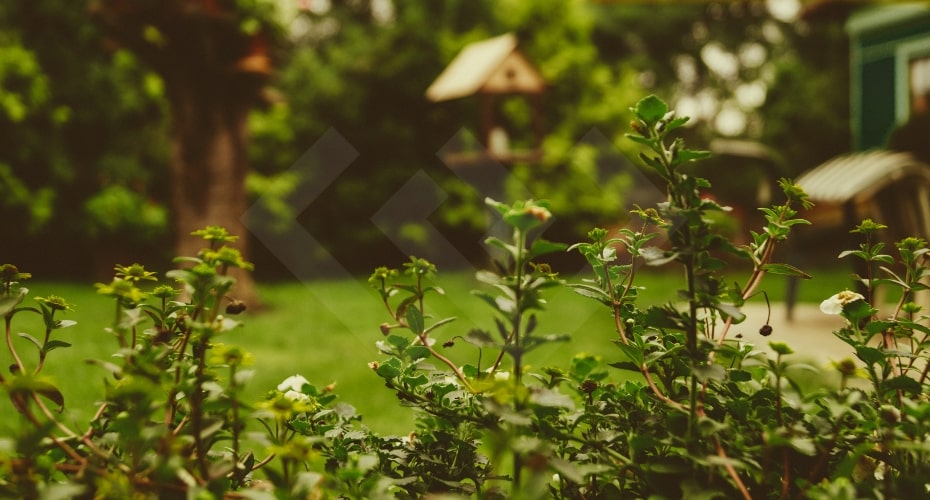
- Cut ‘em Off! – It might seem like the most obvious solution, but fences are always a great first step to keeping out unwanted guests. Although deer are great jumpers, the additional effort required might just be enough of a deterrent. < We’re all a little lazy.
- Don’t Plant Tasty Treats – Deer LOVE plants rich in nutrients, moisture, and basically anything else your doctor said you should eat more of. This includes almost all produce plants as well as leafy ivy and bright, water-filled flora. Instead of these, try planting pungent flowers like lavender with greenery that is thorny, hairy, or prickly. You can also use these less desirable plants as a natural barrier for the tastier ones. If all deer see and smell is lambs’ ear and snapdragons, odds are they won’t investigate much further.
- Let Rover Out More – Chances are your dog is like most others and DOES NOT see grazing deer as welcome guests. Barking dogs are a big deterrent for deer. Who wants to eat with someone yelling at you? Eventually, the deer will likely decide your home isn’t a safe place to eat and won’t return.
- Shine a Light on the Situation – Deer are more skittish than the commitment-phobe you dated in college. Installing motion-sensitive floodlights can often leave a deer stunned and anxious to get away as fast as they can.
- Live a Little! – Although we might find them beautiful and nice to look at, deer aren’t that excited about us. Chances are if a deer sees you out and about in the yard they will simply turn around and find someone else’s garden to plunder. So, get outside more! See this as an opportunity to re-imagine your yard and incorporate more outside living space. Your health and your hydrangeas will thank you.

 Facebook
Facebook
 X
X
 Pinterest
Pinterest
 Copy Link
Copy Link

